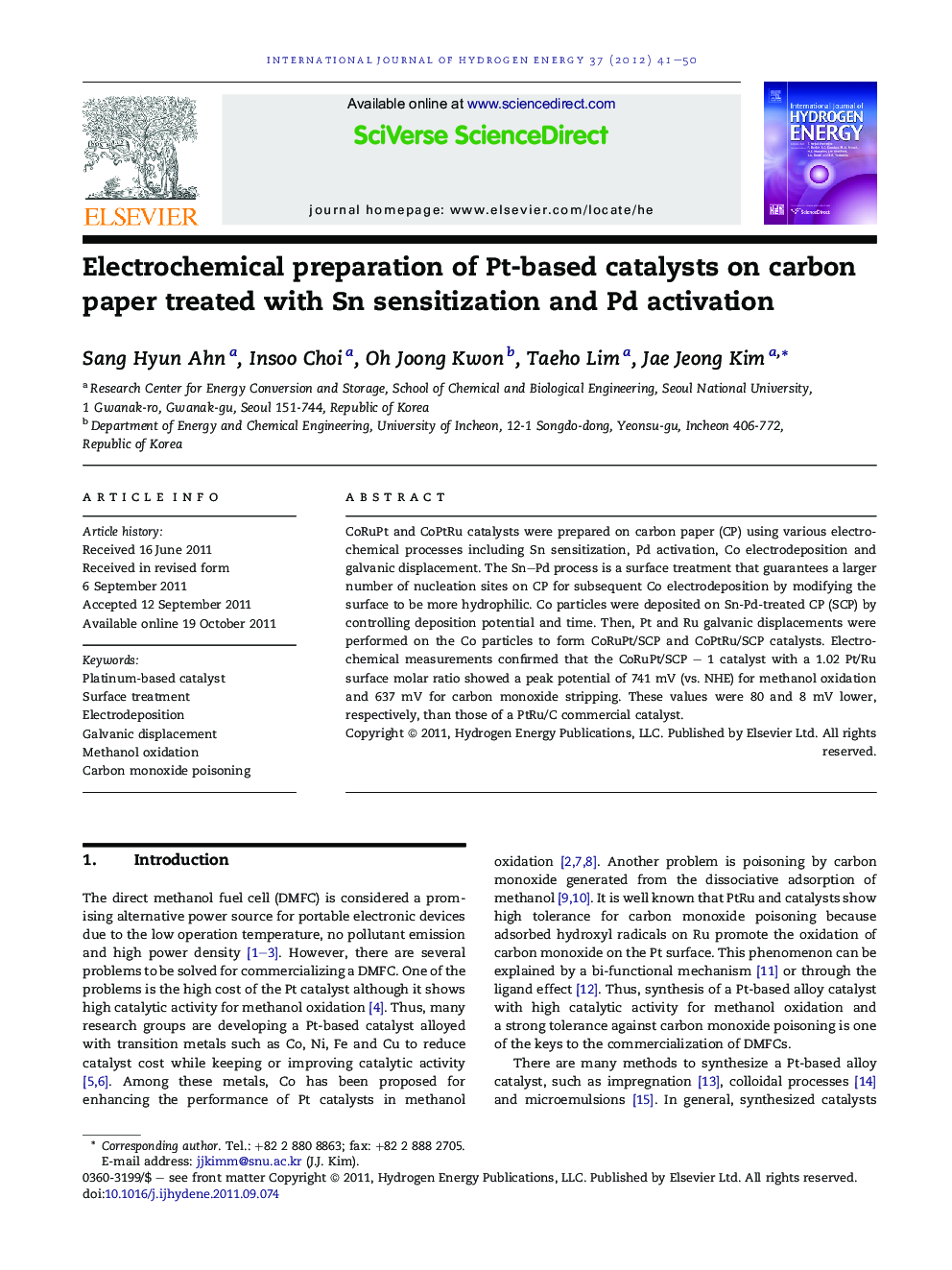| کد مقاله | کد نشریه | سال انتشار | مقاله انگلیسی | نسخه تمام متن |
|---|---|---|---|---|
| 1277119 | 1497568 | 2012 | 10 صفحه PDF | دانلود رایگان |

CoRuPt and CoPtRu catalysts were prepared on carbon paper (CP) using various electrochemical processes including Sn sensitization, Pd activation, Co electrodeposition and galvanic displacement. The Sn–Pd process is a surface treatment that guarantees a larger number of nucleation sites on CP for subsequent Co electrodeposition by modifying the surface to be more hydrophilic. Co particles were deposited on Sn-Pd-treated CP (SCP) by controlling deposition potential and time. Then, Pt and Ru galvanic displacements were performed on the Co particles to form CoRuPt/SCP and CoPtRu/SCP catalysts. Electrochemical measurements confirmed that the CoRuPt/SCP – 1 catalyst with a 1.02 Pt/Ru surface molar ratio showed a peak potential of 741 mV (vs. NHE) for methanol oxidation and 637 mV for carbon monoxide stripping. These values were 80 and 8 mV lower, respectively, than those of a PtRu/C commercial catalyst.
CoRuPt and CoPtRu catalysts were prepared on carbon paper using various electrochemical processes including Sn sensitization, Pd activation, Co electrodeposition and galvanic displacement. The Pt and Ru metals were well dispersed over the Co particles. The synthesized catalysts showed higher catalytic activity in methanol oxidation and greater tolerance against carbon monoxide poisoning compared to a commercial PtRu/C catalyst.Figure optionsDownload as PowerPoint slideHighlights▶ CoRuPt and CoPtRu catalysts were prepared on a carbon paper by using electrochemical methods. ▶ Sn–Pd treatment enabled uniform formation of Co with high density. ▶ High wettability of Co surface led well dispersion of Pt and Ru metals over Co particles. ▶ Synthesized catalysts showed higher performance in methanol and carbon monoxide oxidation.
Journal: International Journal of Hydrogen Energy - Volume 37, Issue 1, January 2012, Pages 41–50